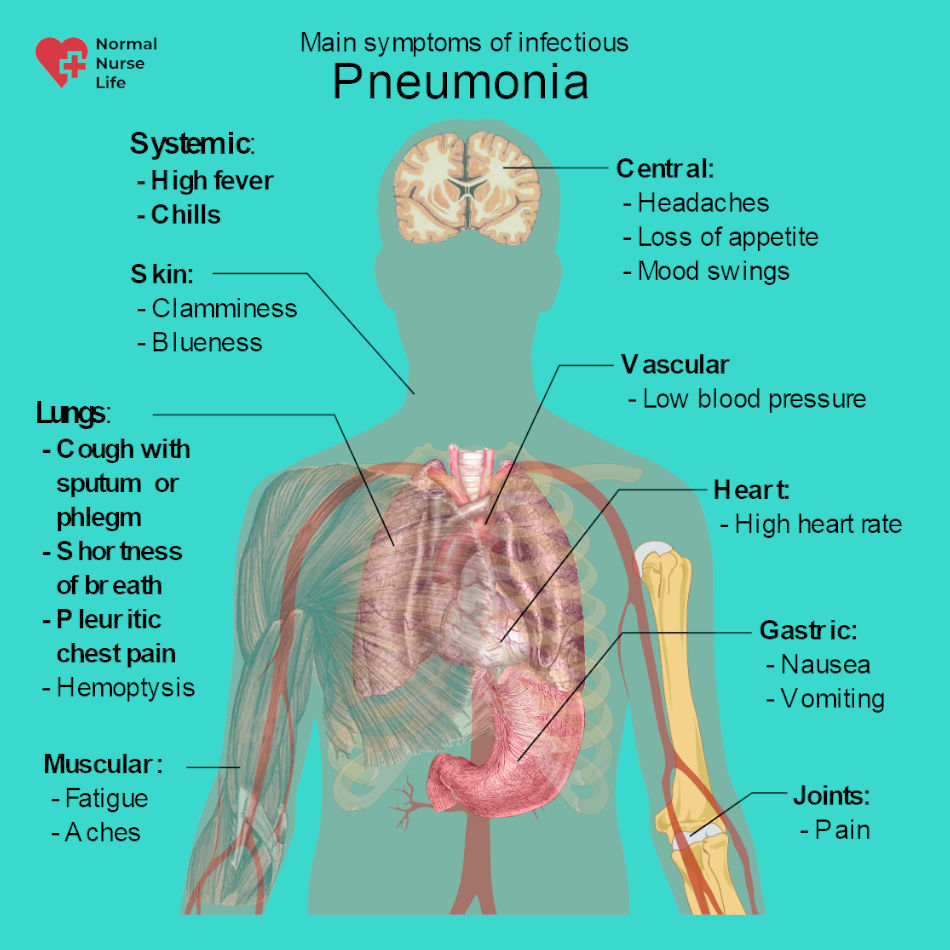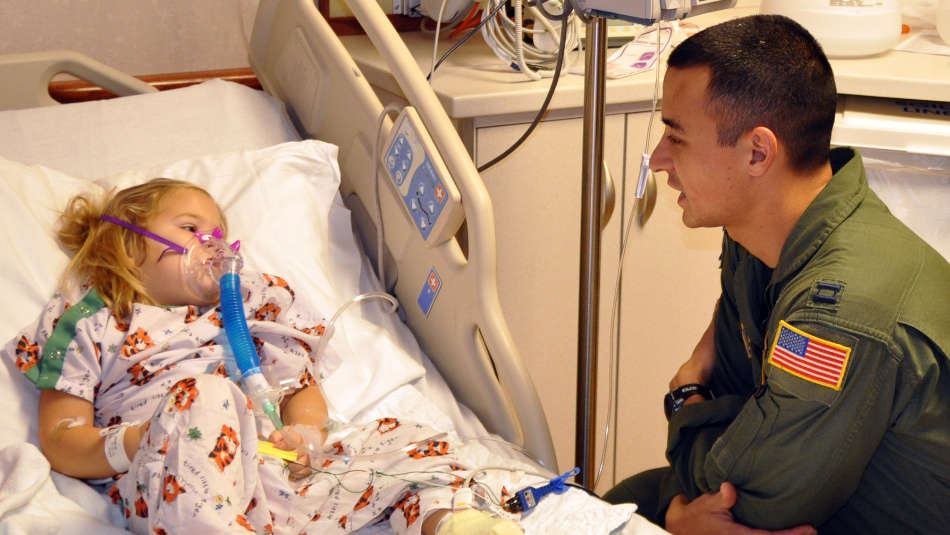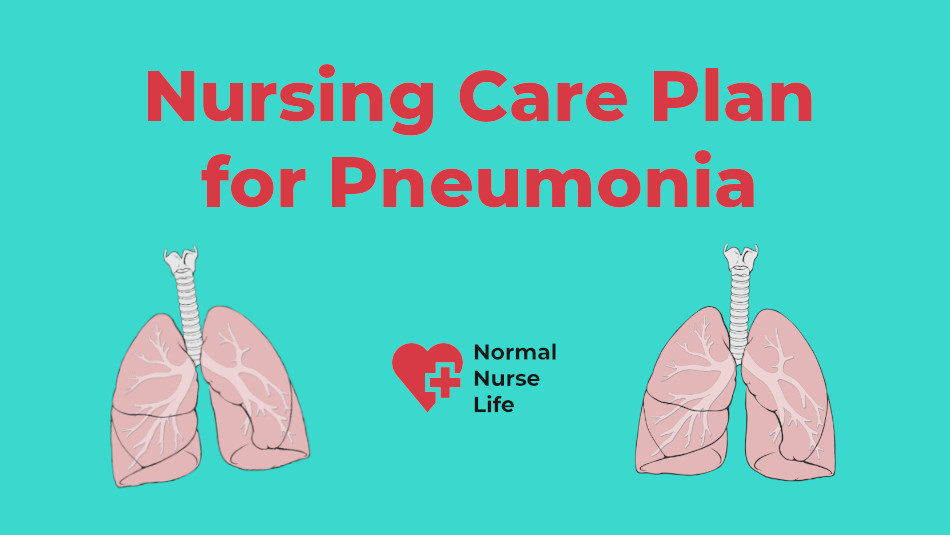Pneumonia is a common infection that causes inflammation of air sacs in one or both lungs. Such inflammation may lead to the filling of the air sacs with fluid.
Further, patients affected with pneumonia may also see their air sacs being filled with pus or fluid. In situations, the infection could lead to life-threatening conditions.
It could happen to anyone though infants and children are more at risk.
Even elderly patients above the age of sixty-five could be at higher risk.
It comes with a number of symptoms and they include cough with pus or phlegm, chills, fever, and accompanied difficulty in breathing.
See also: Nursing Care Plan for Fever
Hence, it is important to offer the right treatment accompanied by a suitable nursing care plan for pneumonia.
While antibiotics can treat many different forms of pneumonia, there are some types of pneumonia that can be prevented by vaccines.
Let us have a look at the nursing care for pneumonia by classifying it into five major headings so that you are able to understand the entire thing better, even from a layman’s perspective.
Before we dive deeper into the subject, here is a quick video on how to do a nursing care plan for pneumonia properly.
After you have watched the video, feel free to learn some more details from down below.
Table of Contents
Nursing care plan for pneumonia risk for infection
Before coming out with the right nursing care plan for pneumonia risk for infection, it is important to understand the symptoms properly.

Further, there also is a need to understand the different types of pneumonia.
Broadly pneumonia is classified into two broad categories.
They are bronchopneumonia. This is a condition that involves the alveoli and bronchioles.
See also: Nursing Care Plan for COPD – Full Guide
The second type is known as Interstitial or reticular pneumonia.
This leads to an inflammatory condition within the lung tissues that lead to the surrounding of the air spaces or even the vascular structures.
This happens instead of the blockages of the air passage itself.
Some patients also suffer from acinar pneumonia where fluid gets accumulated in the distal air spaces of the lungs.
Then, there are patients who also suffer from necrotizing pneumonia that leads to the death of a particular portion of lung tissue that is surrounded by viable lung tissue.
Symptom identification helps in coming out with the right nursing care plan for pneumonia.
The most common symptoms are continuous coughing followed by sputum production, pleuritic chest pain, shallow and rapid breathing, shaking chills, shortness of breath.
When it is left untreated it could lead to respiratory failure, hypoxemia, empyema, pleural effusion, bacteremia, and lung abscess.
An effective NCP or Nursing Care Plan or a suitable care management for those suffering from pneumonia is a long drawn on.
See also: Nursing Care Plan – Full Guide & Free Templates
It starts with an initial assessment of the medical history of the patient, apart from going through a respiratory assessment every four hours apart from a physical examination.
The plan also includes going through ABG measurements.
There are also many supportive interventions.
These include suctioning, oxygen therapy, inducing coughing, deep breathing, ensuring that the patient is adequately hydrated, and mechanical ventilation.
There are also other nursing interventions that are also required and these would depend on the specific condition of the patient, the overall condition of the lungs and respiratory system, the type of pneumonia, his or her age, and other such important factors.
Related articles of ours:
They focus on some important things such as COPD ineffective airways clearance and also look at gas exchanges that may have been impaired.
The nursing care plan for pneumonia also looks at ways to handle ineffective breathing patterns, finding out the avenues and risks of infection, managing acute pain, intolerance to activity, hyperthermia, and also finding out and treating the deficient fluid volume.
The plan also addresses the risk of imbalanced nutrition that is not exactly as per the requirements of the patients’ bodies.
See also: Nursing Care Plan for Infection
Finally, such nursing plans also try and tackle a lack of information on the part of the patients and also address problems that could crop up because of deficient fluid volume.
Nursing care plan for pneumonia impaired gas exchange
Coming out with a suitable nursing care plan for pneumonia for impaired gas exchange is extremely vital and important.
This is referred to as Impaired Gas Exchange.
It deals with retained secretions and also takes into account the risks and problems associated with pulmonary inflammation.
Proper diagnosis is important for coming out with the right nursing care plan for pneumonia.
These include identifying and addressing the reasons for impaired gas exchange.
It could be because of deficiency or excess of oxygenation and also could be because of improper carbon dioxide elimination as far as the alveolar-capillary membranes are concerned.
The other related factors are also taken into account. Identification of the symptoms and then coming out with the right nursing care plan is also vital.
The symptoms could include:
- Tachycardia
- Skin color that is dusky and pale
- Tachypnea and Dyspnea
- Hypertension and Hypoxemia
- See also: Nursing Care Plan Hypertension – Full Guide
- Irritability, restlessness, and also changes in mentation are also taken into account.
- Some people also suffer from disorientation
Nursing care plan for pneumonia in a child

As far as children are concerned, coming out with the right nursing care plan for pneumonia involves finding out the reason for the condition.
Since children are young, they will not be able to identify the reason for the problem.
They may talk about the difficulty of breathing and other subjective manifestations.
Further, the plan also involves identifying the objective problems and these could include all, any, or a combination of the following symptoms:
See also: Objective vs Subjective Data With Examples
- Rapid breathing or tachypnea
- Yellow sputum production along with cough
- Crackles or diminished breath sounds which is also known as adventitious breathing
- Temperature in excess of 36.9 degrees
- Enhanced blood pressure and pulse rate that is in excess of 89 bpm
The main focus is on achieving short-term goals.
It will concentrate on 8 hours of nursing and the secretions will be mobilized.
The focus will also be on maintaining the airway potency and so on. Independent actions will involve deep breathing, helping patients in coughing exercises, and so on.
Oxygen therapy is also an important approach to treatment and in some extreme cases putting the child on ventilation support is also vital.
Related articles of ours:
Nursing care plan for an elderly patient with pneumonia

As far as the elderly patients are concerned, there are some typical nursing care plans for pneumonia that are the main focus of the treatment givers.
These include putting the patient on a suitable antibiotic regimen with the main objective of fighting the infection.
They also may use an inhaler with the objective of reducing inflammation.
However, patients may find difficulty in taking these medications, especially if they are on other medications.
See also: Can a Nurse Practitioner Prescribe Medication?
Under such situations, the nursing care plan for pneumonia should take into account possible side effects, interactions of drugs because doubling the doses by mistake could be risky and could lead to dangerous consequences.
The caretakers will focus on proper supervision and also will assist the patients with various medication regimens and a few of them are mentioned below.
Oxygen therapy is a common requirement for elderly patients because they could have other health conditions.
The care providers will take care to ensure that the oxygen flow rate is maintained at the correct level.
They could also help in giving the right oxygen therapy when the patient is on the move or traveling from home to the hospital or vice-versa.
They also will focus on pneumonia care plans that are personalized.
These could include exercise and monitored and activities. Adequate rest and relaxation will also be the focus of such plans.
Proper attention will also have to be paid to maintaining a healthy weight and a healthy diet.
They also will be taught how to rest and move properly and slowly so that tiredness and fatigue can be avoided.
They also should be taught how to shower without causing too much stress.
These could include sitting on a shower stool and using a hose sprayer for bathing and also helping them to learn how to sit and dress and undress without causing too much tiredness.
If needed, helping them in these activities will also be recommended.
The importance of in-home care is critical for these elderly patients suffering from various impacts of pneumonia.
See also: Nursing Care Plan for Dysphagia
Nursing care plan for bronchopneumonia
Let us finally look at the nursing care plans that are generally practiced on patients suffering from bronchopneumonia.
The main focus will be on addressing ineffective airway clearance and this is mainly caused by the accumulation of secretions.
This is done by different types of interventions and we are listing down a few of them:
- The nursing plan focuses on regular monitory of the respiratory condition and status and this is done every 2 hours. The objective is to assess and then address abnormal breathing sounds and other associated respiratory problems.
- Offer to suction to take out the accumulated secretions from the lungs.
- The focus of oxygen therapy every six hours.
- Give attention to coming out with an environment that is comfortable and convenient for the patients to sleep.
- Ensure that the patient is in a convenient position when sleeping or also when sitting.
- If needed they may also go in for chest percussion.
- Give the sputum for sensitivity tests and also go in for culture tests.
See also: Subjective vs Objective Data – Differences?
Conclusion: Nursing care plan for pneumonia
We are sure that the above would have given you a reasonably good insight into the various aspects of the nursing care plan for pneumonia and other related lung disorders and bronchial problems.
The line of treatment and approach cannot be the same for all patients and would depend on various factors.
These include age, gender, existing medical condition, and other such factors.
The treatment would also depend on the type of pneumonia that the patient could be suffering from.
If you would like to learn some more about NCPs, check out these articles of ours:
- Nursing Care Plan – Full Guide & Free Templates
- Nursing Care Plan for COPD – Full Guide
- Nursing Care Plan Hypertension – Full Guide
- Nursing Care Plan for Anxiety – Full Guide
- Nursing Care Plan for Diabetes [FREE TEMPLATE]
- Nursing Care Plan for Depression
I’d also appreciate if you could give this article a star rating. Thank you in advance! 🙂
